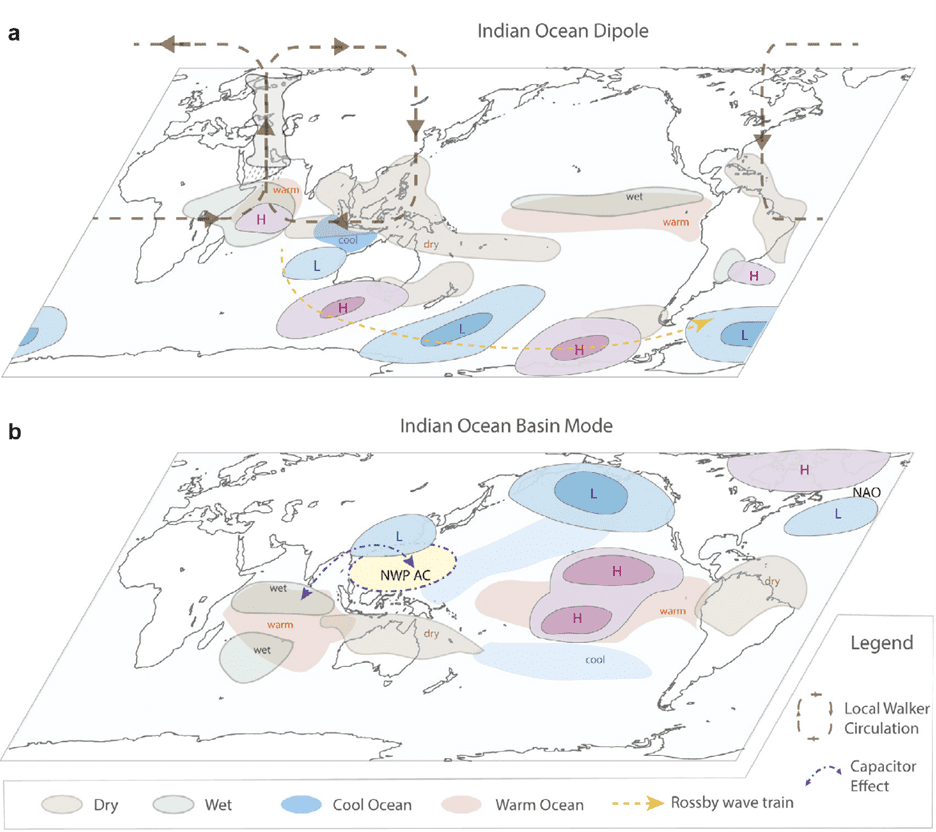Chapter 7 Impacts of the Indian Ocean on regional and global climate
Ummenhofer, C. C., Taschetto, A., Izumo, T., & Luo, J.-J. (2024). Chapter 7 Impacts of the Indian Ocean on regional and global climate. In C.C. Ummenhofer & R. R. Hood (Eds.), The Indian Ocean and its Role in the Global Climate System (pp. 145–168). Elsevier. https://doi.org/10.1016/b978-0-12-822698-8.00018-4

(a, b) Teleconnection mechanisms to a positive Indian Ocean Dipole and Indian Ocean Basin Mode. Illustrated in the schematic are changes in local Walker circulation (dashed brown cells), areas of above (green patch) and below (brown patch) precipitation, warm (red patch) and cool (blue patch) sea surface temperature anomalies, Rossby wave train emanating from the Indian Ocean (high and low centers and dashed yellow arrow), and the capacitor effect onto the Northwest Pacific anticyclone (purple dashed arrow and yellow circle). (Figure reproduced from Ummenhofer et al., 2024)
The impact of Indian Ocean variability on regional and global weather and climate across a range of timescales is increasingly recognized. Large strides have been made in understanding and predicting such impacts (e.g., droughts, floods, wildfires), which can have considerable societal relevance, especially in the densely populated Indian Ocean rim with agrarian societies vulnerable to changes in climate. Atmospheric teleconnections triggered by Indian Ocean conditions can impact variability in other ocean basins, including the tropical Pacific and the El Niño-Southern Oscillation, or affect the higher latitudes of both hemispheres, including the North Atlantic Oscillation, the Atlantic Meridional Overturning Circulation, as well as Antarctic sea-ice. Understanding feedbacks and interactions among the tropical ocean basins can aid seasonal prediction efforts. Being particularly vulnerable to anthropogenic climate change, the Indian Ocean exhibits strong warming trends that can further modulate how the Indian Ocean affects regional or global climate and weather patterns.
